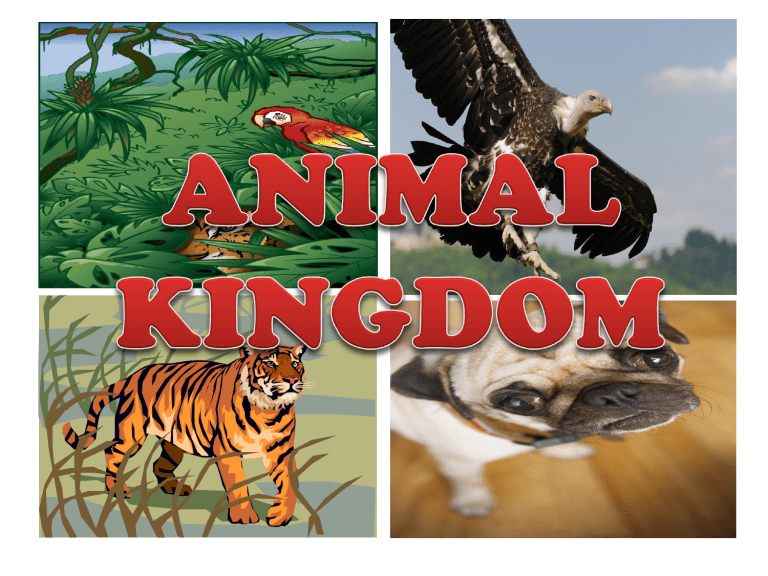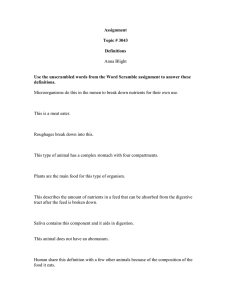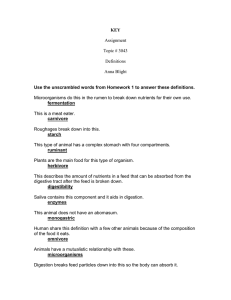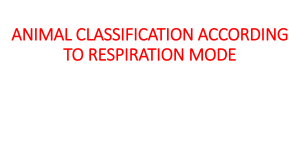
• Animals belonging to the kingdom animalia are multicellular, eukaryotic heterotrophs whose cells lack cell walls. INVERTEBRATES • These are animals that have no backbone or vertebral column. • They range in size from microscopic dust mites to more than 20 meters in length. • They include groups as diverse as sea stars, worms, jellyfish and insects. VERTEBRATES • Vertebrates are those animals having backbone. • They comprise the 5% of the animals in the animal kingdom. • These animals include fishes, amphibians, reptiles, birds and mammals. 1.FEEDING Animals feed in various ways. Herbivores feed on plants including roots, stems, flowers and fruits. They are also called as plant-eaters. • CARNIVORES • OMNIVORES are those animals that feed on other animals. • They are also called as animal eaters. are animals that feed on both plants and animals. 2. RESPIRATION All animals whether they live in water or on land undergo respiration. This means that they take in oxygen and release carbon dioxide. 3. CIRCULATION Large animals have circulatory system that made possible for the circulation of nutrients to take place. Smaller animals such as small aquatic worms rely on diffusion for the circulation of important nutrients. 4. EXCRETION 5. RESPONSE • a critical activity for animal life • their primary waste product is called ammonia • different stimuli are received by the neurons in the different senses of animal’s body. 7. REPRODUCTION • Most animals Animals move in reproduce different ways. There are those that sexually by producing move through their haploid gametes. feet, some using their hair like • Some animals structures called reproduce flagella. asexually. 6. MOVEMENT Complex animals tend to have high levels of cell specialization and internal body organization, bilateral body symmetry, a front end or head with sense organs and a body cavity.






